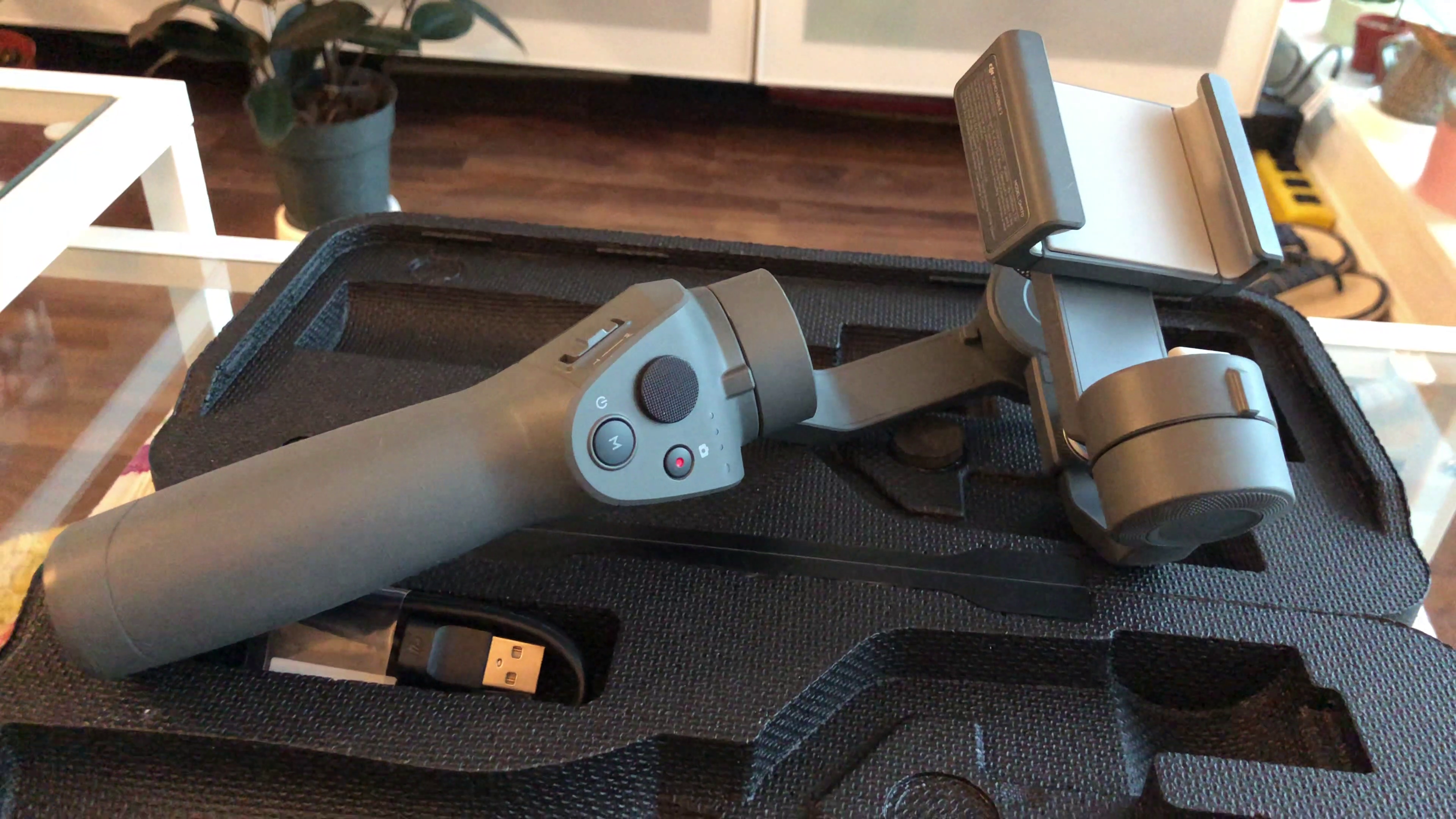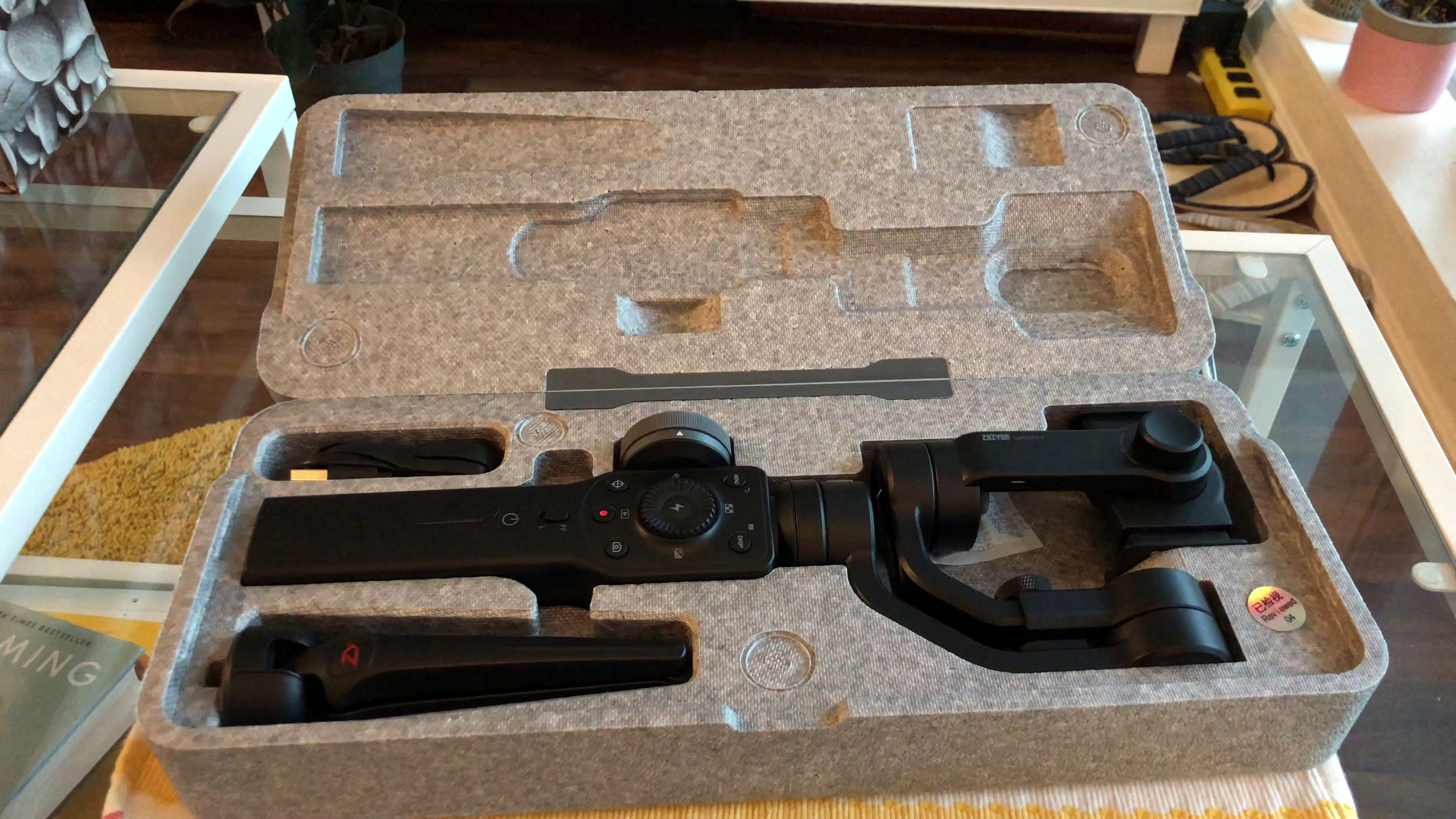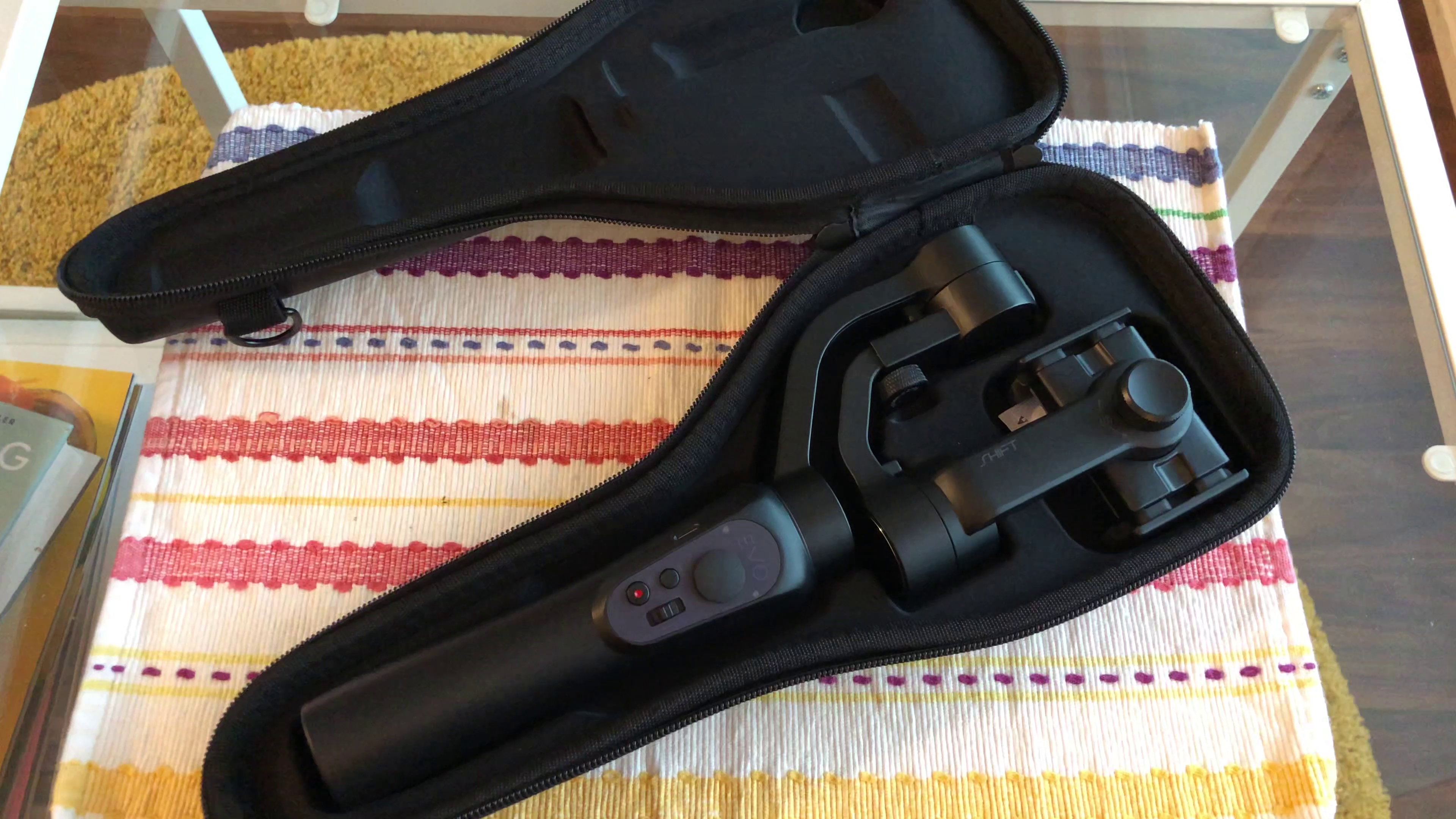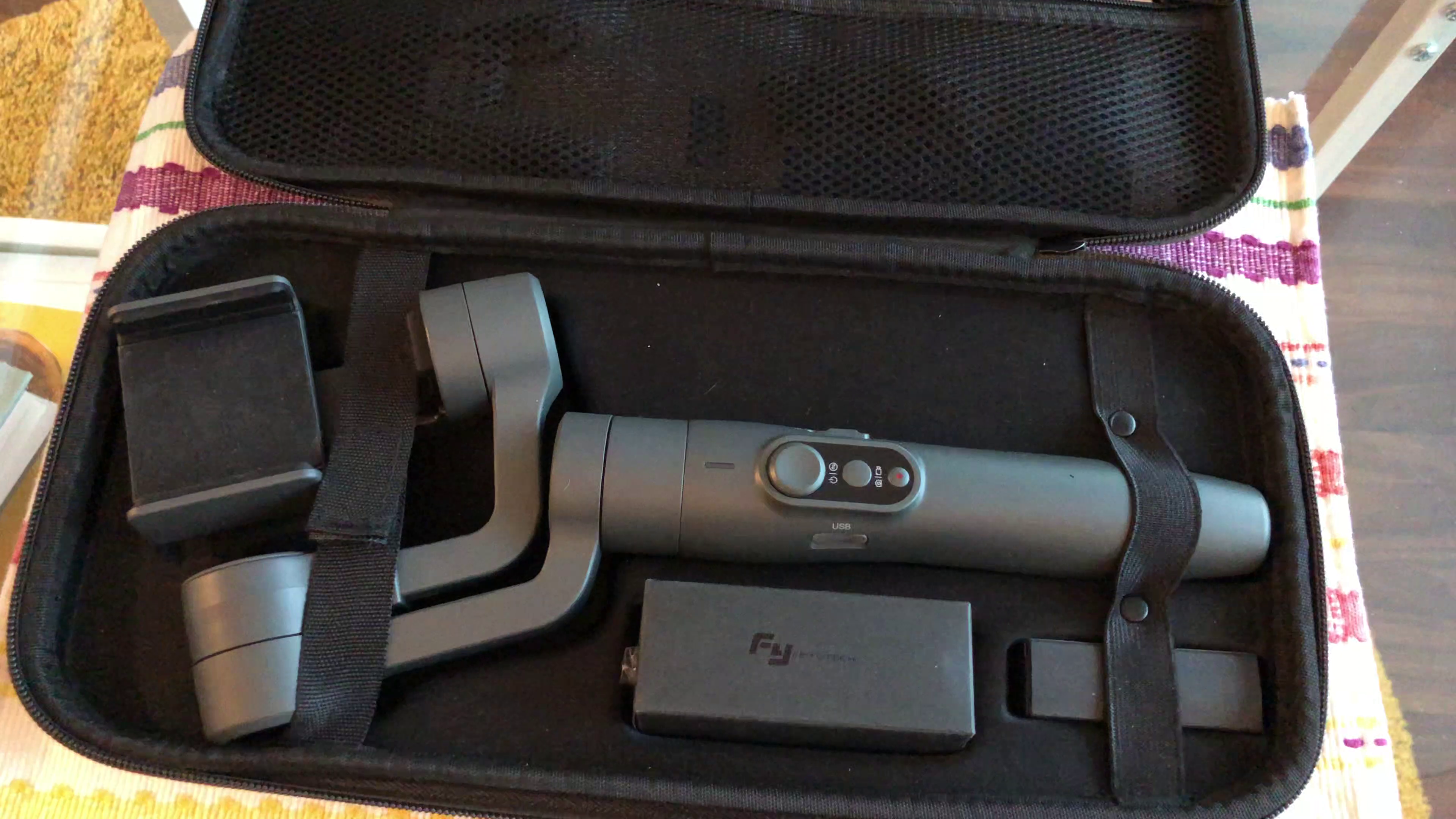I love creating videos.
I love the ability to capture the moment, especially while travelling, and stitching footage together to tell a story. I used to rock a Canon T2i, along with a few lenses while abroad, which was great for image quality, but I quickly became lazy about lugging the extra 10-15 pounds of bulky gear with me everywhere I went.
Then I had a brief stint with a DJI Osmo, instead of an SLR and lenses, which was great for a lot of walking around and capturing open outdoor environments, but was not great at close-ups (of food, of course) or lower-light situations.
I stopped wanting to make videos while travelling, because it became more of a burden and took away from the experience of it all.
Fast forward to 2018, when I went on vacation in Hong Kong and Vietnam, and brought back a lot of footage shot entirely on my phone. I had a lot of shots of beautiful scenery, delicious food, and the awesome experiences we had along the way. I cut it all together and shared with friends, and kind of fell in love with the idea of creating videos again!
As a result, I began to look around for accessories that would take these videos to the next level, and found out that gimbals, made specifically for smartphones, had become quite accessible and affordable in the past year or two. There were a lot of choices, and I wasn’t entirely sure what really made for a good smartphone gimbal, as many of them looked fairly similar and were close in price!
Because of this, I wanted to have a very in-depth comparison of as many smartphone gimbals as I could get my hands on that were close to each other in price range.
Introducing: The Best Smartphone Gimbal Stabilizers in 2019.
Product List and Testing Methodology
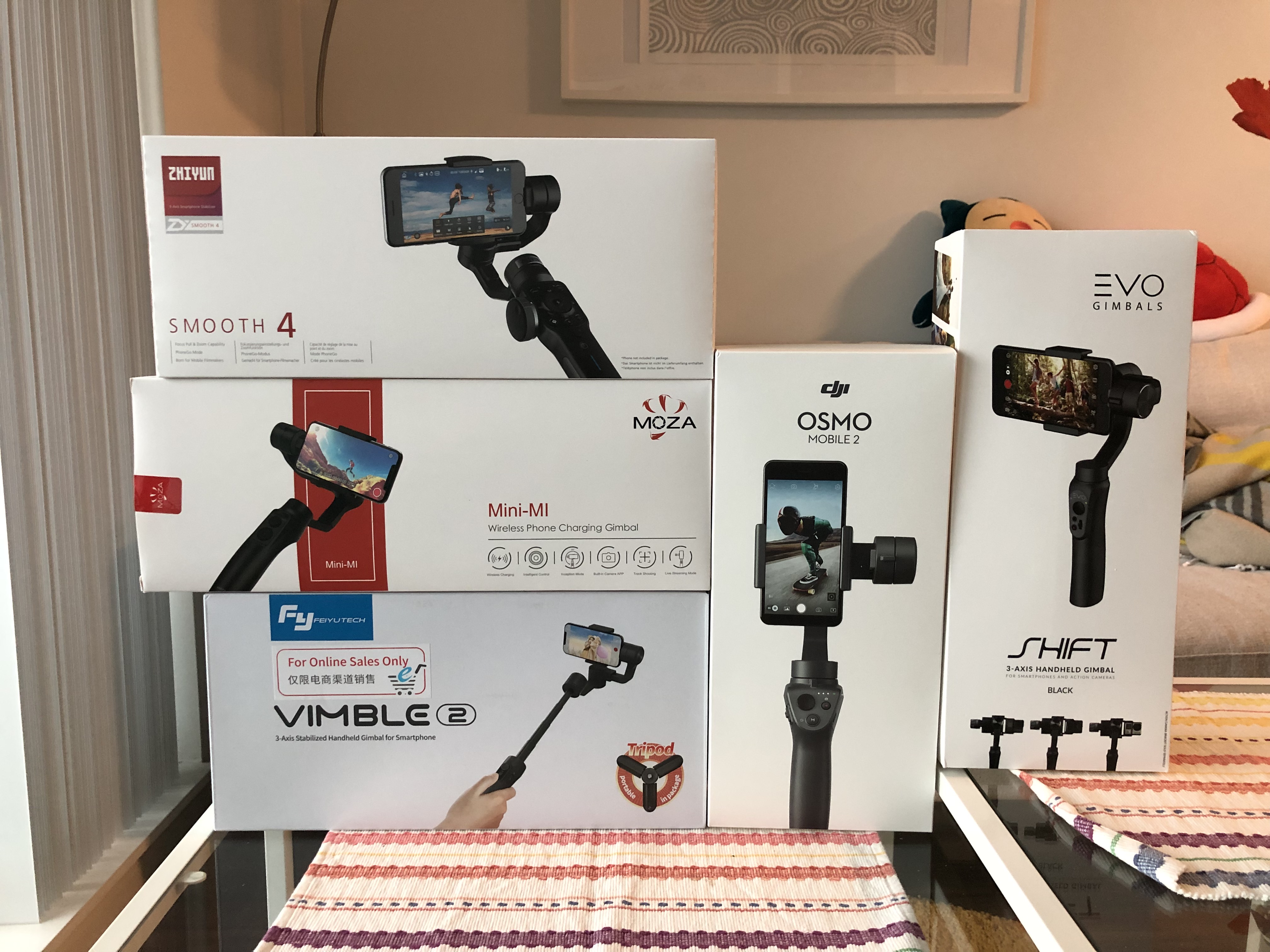
I extensively tested five different smartphone gimbals, that cost between $130 and $170 CAD: (These are quick links to the Amazon listing of each gimbal!)
- DJI Osmo Mobile 2 ($163.24 CAD)
- Zhiyun Smooth 4 ($159.00 CAD)
- EVO Shift ($149.00 CAD)
- FeiyuTech Vimble 2 ($129.00 CAD)
- MOZA Mini-MI ($149.00 CAD)
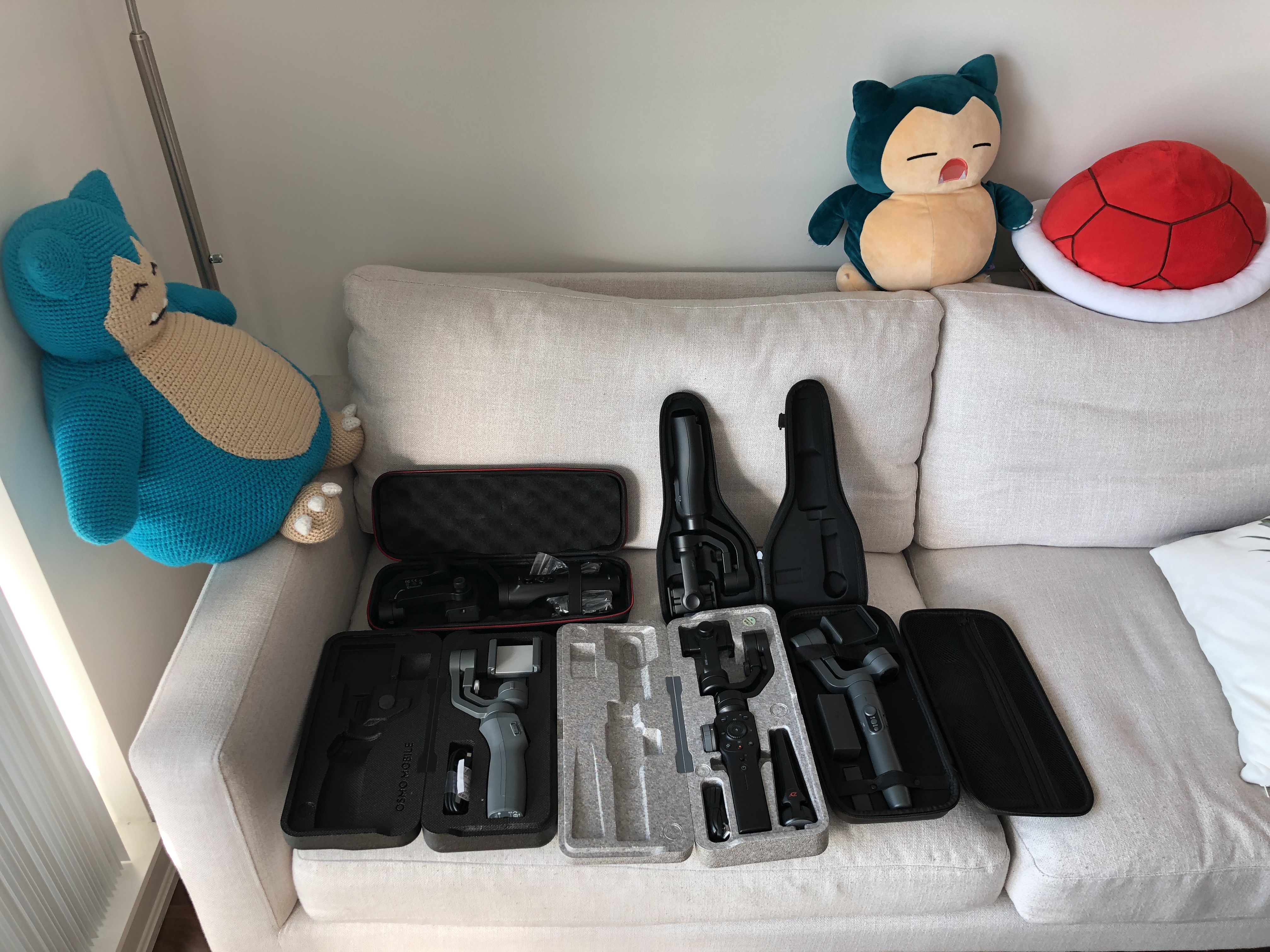
I spent approximately 2-3 hours with each smartphone gimbal, starting with a thorough examination of each device, and looking at the following attributes:
- Time to Usability - Approximate time it took me to get up and running, including balancing for the first time, downloading any apps, pairing with the smartphone gimbal, etc.
- Usability of Controls - For the smartphone gimbal’s physical controls; how responsive are those controls and are they laid out in an accessible and reachable manner?
- Ease of First Time Balance - How easy was it to balance a smartphone onto the smartphone gimbal for the first time?
- Necessity of Re-balance - When using the smartphone gimbal again, was it required to re-balance the same phone into the device?
- Time for Re-balance - How long does it take to re-balance a smartphone, if a re-balance was required?
- App Usefulness / Usability - As all five of the smartphone gimbals had vendor-specific apps, how useful and usable were their apps? Would I have preferred using their apps over the stock camera app?
- Weight / Size - How heavy and bulky is the smartphone gimbal, and how would it fare over longer term usage, especially while travelling?
- Materials / Durability - What is it made from, and how durable does it seem and/or feel?
- Battery Life - Approximate length of battery performance, as reported by the product pages and vendors themselves.
- Battery Type - What sort of battery is used for the smartphone gimbal? (This is ignored in the actual analysis, as all of the smartphone gimbals have built-in lithium ion batteries.)
- Time to Full Charge - Approximate length of time required to charge to full, as resported by the product pages and vendors, but also checked against personal experience.
- What’s Included - All of the items that come inside of the box, aside from the smartphone gimbal itself.
- Additional Notes - Any additional notes that I thought would be worth noting!
Afterward, I did some field tests to have footage of real world scenarios that I would encounter while travelling, which really consist of different types of movement when I would be shooting video:
- Walking Forward
- Walking Backward
- Running Forward
- 180º Turn
- Panning Horizontally
- Panning Vertically
All of the footage was shot on an iPhone X, 4K video quality at 30FPS, and I have cut it together into a single video for each smartphone gimbal, showing off each movement above. There was no editing or post-production done on the videos, aside from cutting it together and adding text and music to the footage.
Let’s get it going!
DJI Osmo Mobile 2
Price: $163.24 CAD ($125.00 USD)
Amazon Link: DJI Osmo Mobile 2 Handheld Smartphone Gimbal
Time to Usability
- ~10 minutes
Usability of Controls
- Joystick responds quickly
- Three different modes, not entirely clear which mode you’re in unless you move
- Fewer buttons means fewer things to control, but fewer things to mess up
Ease of First Time Balance
- Difficult to get roll axis balanced well
Necessity of Re-balance
- Roll axis might need re-calibration every time
- Tilt axis needs re-calibration every time
Time for Re-balance
- 3-5 minutes
App Usefulness / Usability
- Required registration / activation before product works
- Pairing is pretty painless
- Not useful enough to use over iOS Camera app
Weight / Size
- 485g (1.06lb)
- Well-balanced
- Compact, folds up nice
- Very comfortable grip
Materials / Durability
- Dense plastic for frame
- Dense plastic with coarse grippy coating for body
Battery Life
- Up to 15 hours
Time to Full Charge
- ~2.5 hours
What’s Included
- Dense foam case
- Micro USB to USB-A Cable
Additional Notes
- Can get caught and will adjust position when rotating in lock mode
Field Test: DJI Osmo Mobile 2
Zhiyun Smooth 4
Price: $159.00 CAD ($119.00 USD)
Amazon Link: Zhiyun Smooth 4 3-Axis Handheld Gimbal Stabilizer
Time to Usability
- ~10 minutes
Usability of Controls
- So many buttons, with lots of helpful icons, but it’s not entirely clear how many of them help
- Most buttons are only useful using the ZY Play app, which is not great
Ease of First Time Balance
- Difficult to get roll axis balanced well
Necessity of Re-balance
- Roll axis might need re-calibration every time
- Tilt axis needs re-calibration every time
Time for Re-balance
- 3-5 minutes
App Usefulness / Usability
- No registration required
- Pairing is pretty painless
- Not useful enough to use over iOS Camera app
Weight / Size
- 547g (1.21lb)
- Not very balanced
- Large and heavy, folds nicely
- Not great ergonomically
Materials / Durability
- Dense plastic for body and frame
Battery Life
- Up to 12 hours
Time to Full Charge
- ~2.5 hours
What’s Included
- Dense foam case
- Attachable tripod
- USB-C to USB-A Cable
Additional Notes
- Can get caught and will adjust position when rotating in lock mode
Field Test: Zhiyun Smooth 4
EVO Shift
Price: $159.00 CAD ($119.00 USD)
Amazon Link: EVO Shift 3 Axis Handheld Gimbal
Time to Usability
- ~10 minutes
Usability of Controls
- Joystick is floaty and responds slowly
- Four different modes, difficult to know which mode you’re in without being very familiar
- Record button does not control shutter/record button in iOS Camera app
Ease of First Time Balance
- Difficult to get roll axis balanced well
Necessity of Re-balance
- Roll axis needs re-calibration every time, if extended, it does not allow unit to fold flat
- Tilt axis needs re-calibration every time
Time for Re-balance
- 3-5 minutes
App Usefulness / Usability
- No registration required
- Pairing is pretty painless
- Not useful enough to use over iOS Camera app
Weight / Size
- 450g (0.99lb)
- Nicely balanced
- Smallest of all the smartphone gimbals being compared
- Not so comfortable to hold
Materials / Durability
- Dense plastic for body and frame
Battery Life
- Up to 12 hours
Time to Full Charge
- ~2.5 hours
What’s Included
- Fake leather case
- Micro USB to USB-A Cable
Additional Notes
- Can do full 360 degrees for rotation on pan motor
- Can get caught and will adjust position when rotating in lock mode
Field Test: EVO Shift
FeiyuTech Vimble 2
Price: $129.00 CAD ($89.00 USD)
Amazon Link: FeiyuTech Vimble 2
Time to Usability
- ~5 minutes
Usability of Controls
- Joystick works well
- Light indicates what mode you’re on
- Record button can control shutter/record on iOS Camera app
- Trigger on back makes for easy locking mode
Ease of First Time Balance
- Very easy, did no adjustments and worked great out of the box
Necessity of Re-balance
- None, was balanced just fine before second use
Time for Re-balance
- None
App Usefulness / Usability
- No registration required
- Pairing is pretty painless
- Not useful enough to use over iOS Camera app
Weight / Size
- 428g (0.94lb)
- Very light
- Gets somewhat uncomfortable to operate very quickly
Materials / Durability
- Dense plastic with softer coating for body and frame
Battery Life
- Up to 5 hours
Time to Full Charge
- ~2 hours
What’s Included
- Hard fake leather case
- Micro USB to USB-A Cable
- Attachable tripod
- Conversion tips (for cables)
- Wrist strap
Additional Notes
- Has telescopic extension, like a selfie stick
- Can get caught and will adjust position when rotating in lock mode
Field Test: FeiyuTech Vimble 2
MOZA Mini-MI
Price: $149.00 CAD ($99.00 USD)
Amazon Link: MOZA Mini-MI
Time to Usability
- ~10 minutes
Usability of Controls
- Icons on control panel make some sense, but need to spend more time with manual
- Most buttons do nothing with iOS Camera app
- Mode lights indicate mode
Ease of First Time Balance
- Difficult to get roll axis balanced well
Necessity of Re-balance
- None, was balanced just fine before second use
Time for Re-balance
- None
App Usefulness / Usability
- No registration required
- Pairing is pretty painless
- Not useful enough to use over iOS Camera app
Weight / Size
- 543g (1.20lb)
- Quite heavy
- Comfortable enough because of wide grip
Materials / Durability
- Dense plastic for frame
- Dense plastic with softer coating for body
Battery Life
- Up to 10 hours
Time to Full Charge
- ~3.5 hours
What’s Included
- Soft fake leather case (has shock-absorbing foam inside)
- Attachable tripod
- Micro USB to USB-A
Additional Notes
- Can do full 360 degrees for rotation on pan motor
- Can get caught and will adjust position when rotating in lock mode
- Doesn’t fold up flat because of roll axis screw
- Phone sat too low in the grip, covering / pressing volume or power buttons
- Case has non-detaching strap, which makes it hard to get in or out
Field Test: MOZA Mini-MI
Conclusion
While all five of the tested smartphone gimbal stabilizers have similar appearances and materials, it’s clear that there are some pretty distinct differences in their actual performance.
Here are some general trends that I noticed:
- Two gimbals, the EVO Shift and the FeiyuTech Vimble 2, had noticeable jitter while walking normally, which is the opposite of what we want from something that stabilizes our video.
- No smartphone gimbals were able to have completely stable video while running.
- Two gimbals, the DJI Osmo Mobile 2 and the MOZA Mini-MI, were the most comfortable for holding for longer than 15-20 minutes. The others started causing discomfort and wrist pains during testing! (I know, I know, I need to hit the gym more.)
- I preferred using the stock camera for usage with all of the smartphone gimbals, and not all of them supported using the physical buttons on the gimbal for taking photos with the stock camera app.
Given these trends, and the above tests, I would personally choose the DJI Osmo Mobile 2.
The DJI Osmo Mobile 2 had the most comfortable grip, wasn’t too heavy, had the most responsive physical controls, and is from a brand that is recognizable and large enough to have confidence in the product. I’m not a huge fan of the DJI GO app, but I appreciate the flexibility of being able to use the physical controls with the stock camera app.
I hope to continue keeping my eye on smartphone gimbals as they improve year over year, while the prices continue to decrease. It would be great to eventually have a smartphone gimbal that is light, sturdy, comfortable to hold, and quick to set up.
Thank you so much for taking a look at my reviews of The Best Smartphone Gimbal Stabilizers in 2019!
If you have a smartphone gimbal that you like, or you want to start a conversation about my tests in this post, please be sure to give me a shout on Twitter @jonlim and let me know what you think!
